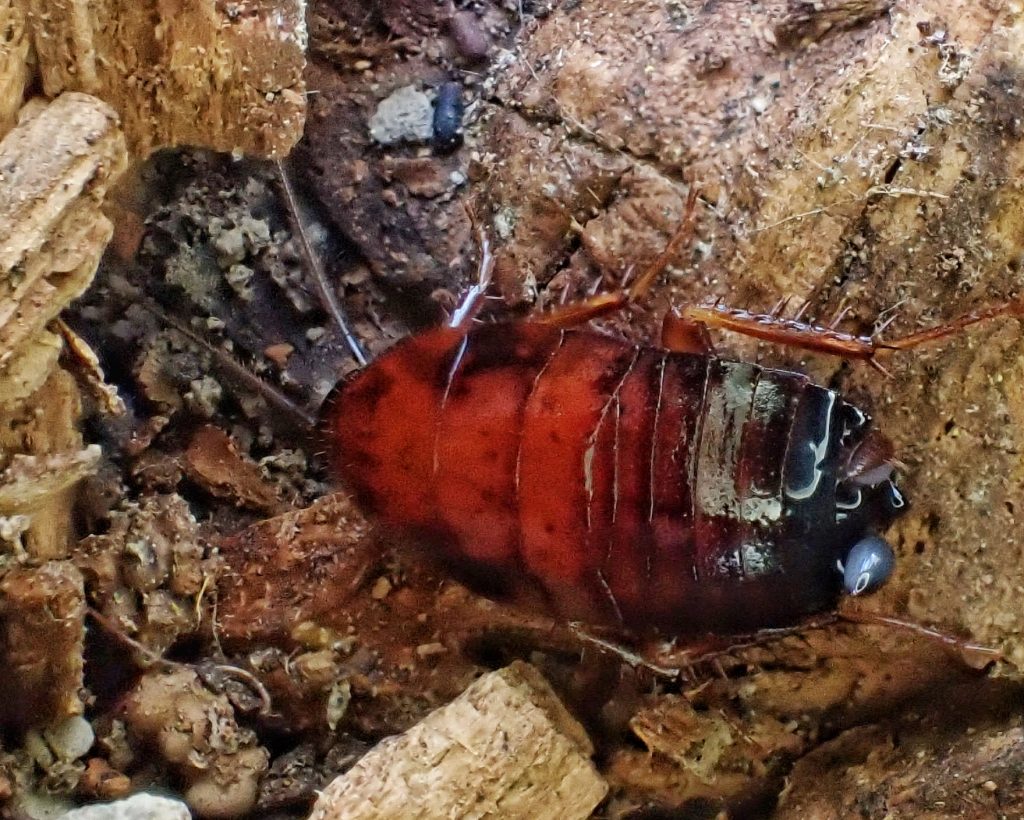
The best critters that I personally found on my day of exploring with Sam McNally (although he did find the first one) were several of these Western wood cockroaches. I had seen Parcoblatta americana before (interestingly enough, they were in habitat with a very similar feel, with many scrubby Garry oaks and pines, in Klickitat County, Washington, which seems to be the only location from which they are known in Washington state), but always on days with higher temperatures, and they scurried away before I got decent photos. Because I had focused on trying to photograph them, I also missed my opportunity to collect one for refrigerated portraits. I didn’t make that mistake this time, snagging the first one I saw, but several others were actually quite cooperative and I managed to also get some in situ photographs.
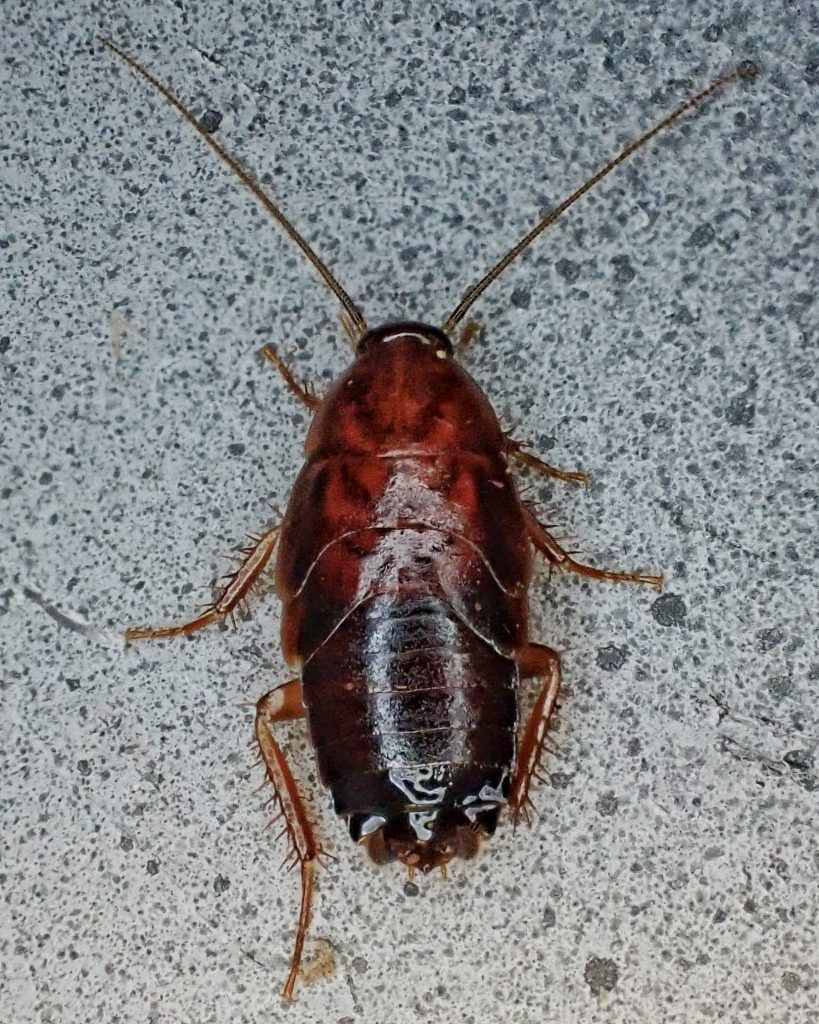
Though they are in the same family (Ectobiidae) as the non-native pest species Blatella germanica (German cockroach) and Supella longipalpa (brown-banded cockroach), Western wood cockroaches are a native species, and are not a pest because they are very seldom found in homes, much preferring the great outdoors. The males have developed wings, but females do not (which is not an uncommon dimorphism in Ectobiidae and cockroaches in general, and is found in almost all Parcoblatta), and males are often found at lights. Males live separately from females and nymphs, although all Western wood cockroaches are frequently found under rocks, logs, and other cover, and only venture out at night to feed. Like many other species of Parcoblatta, P. americana is sometimes found in the nests of harvester ants (though the mechanisms by which they remain safe from predation are unknown), where they scavenge among the ant’s refuse piles. Since this has been confirmed for other Parcoblatta, they may even live in underground nests of Vespula spp. (yellowjackets), but it doesn’t appear to have been documented for Western wood cockroaches. Nymphs have been found in the nests of wood rats (genus Neotoma). They are known to climb trees in search of food, and one Parcoblatta americana was observed feeding on an apple 6’ above the ground.
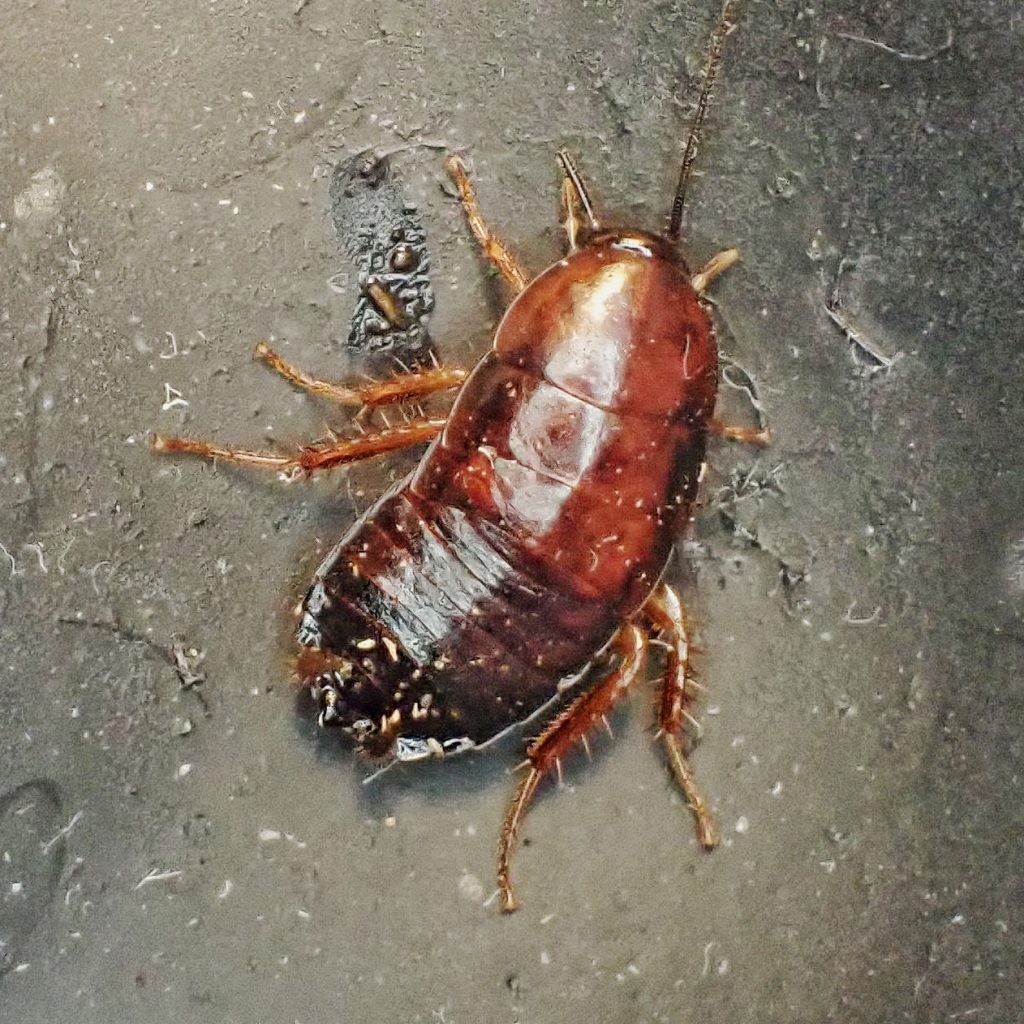
Because they are periodically in situations where their diet is nitrogen deficient, Parcoblatta spp. have developed a biological system where uric acid is not excreted as a liquid. Instead they store as much as possible in their fat cells, and the remainder is passed as urate pellets, which are stored for future use during times of nitrogen famine, and may be consumed by the excretor, or their conspecifics. Females utilize these pellets in reproduction, since the production of ootheca is nitrogen depleting for the female.
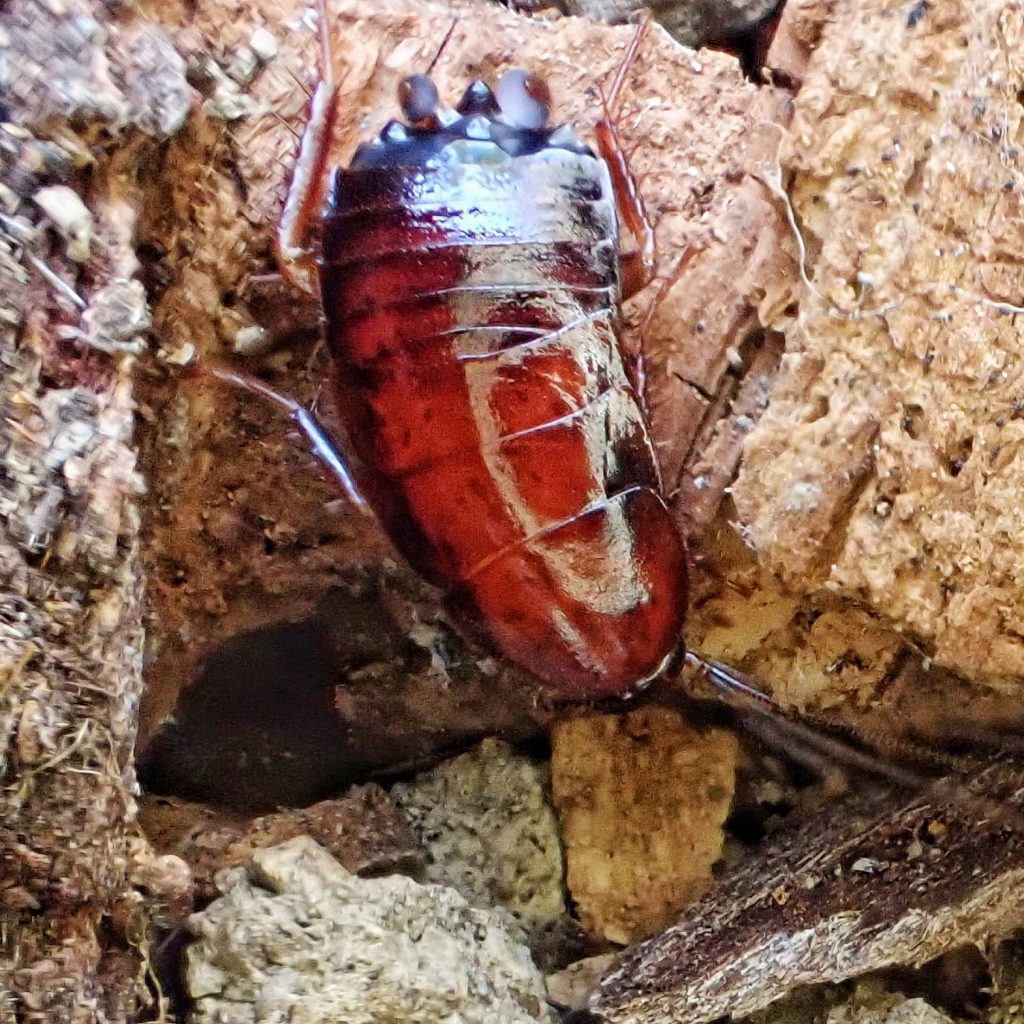
And what, you may ask, is an ootheca? As I mention in my profile of Mantis religiosa, an ootheca is an egg case made of proteins that harden into a protective cover that has somewhat the consistency of styrofoam. Female cockroaches have what are called colleterial glands near the end of their abdomen, and one side exudes a structural protein, while the other exudes a glucosidase. When they are mixed in the enclosing of the egg mass, the glucosidase liberates an acid from the protein, and that acid then oxidizes, causing the ootheca to harden (Brunet/Kent; 1955).
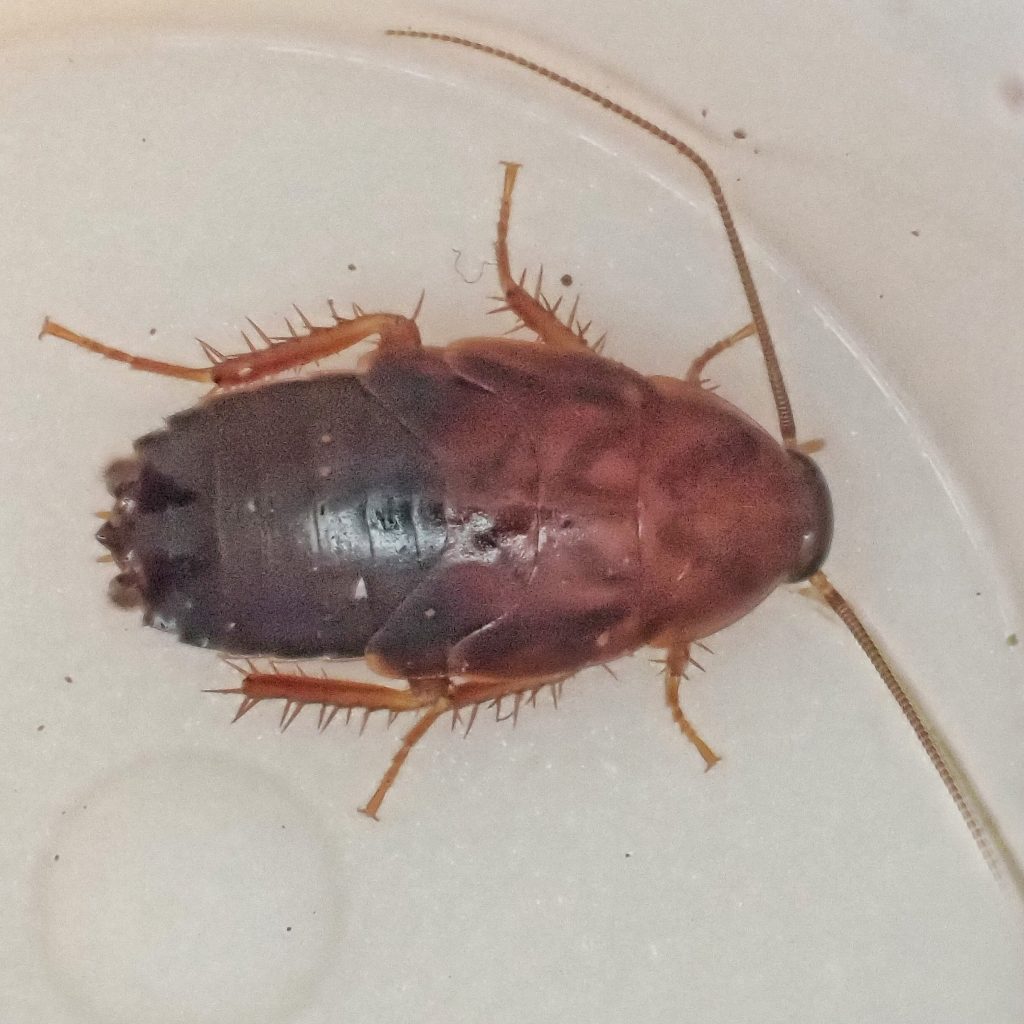
As in most species of cockroaches where the females cannot fly, female Parcoblatta americana release pheromones to attract the males. After some antennal fondling the male turns away and spreads his wings to present his abdomen, onto which the female climbs and begins feeding on and assessing the secretions of a gland between the 5th and 6th segments, with her palps and mouthparts. After a few seconds the male backs further under the female, and twists its abdomen to hook its genitalia into a sclerite near her ovipositor. Once they are connected the male moves forward and the female turns 180⁰, untwisting the male’s abdomen. They remain facing away from each other until sperm transfer is complete, which may take up to an hour. If they are disturbed the female will move away while they are still attached, sometimes with great speed, whilst the male backpedals furiously.
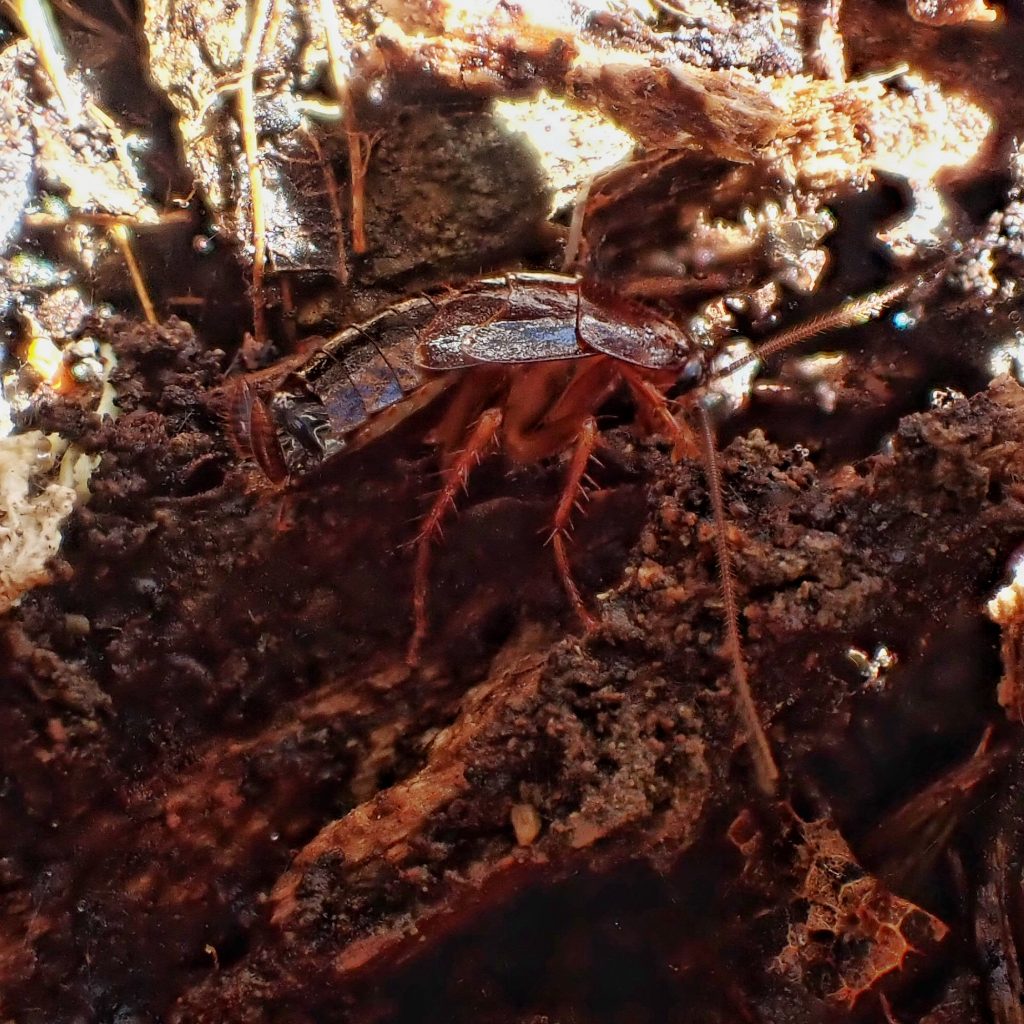
The oothecae of Western wood cockroaches are semi-absorbent, and must be deposited in a humid environment so as to supply moisture to the eggs. They are often glued into a crevice and concealed with debris or feces. Typically they are placed near known food sources, often in great aggregations, as nearly 200 ootheca have been found together, and they may place attracting pheromones on ootheca to produce these aggregations. Much of the information in this profile came from “Cockroaches: Ecology, Behavior, and Natural History; Bell/Roth/Nalepa; 2007”, and this link takes you to a PDF of its contents. It is a fascinating book!
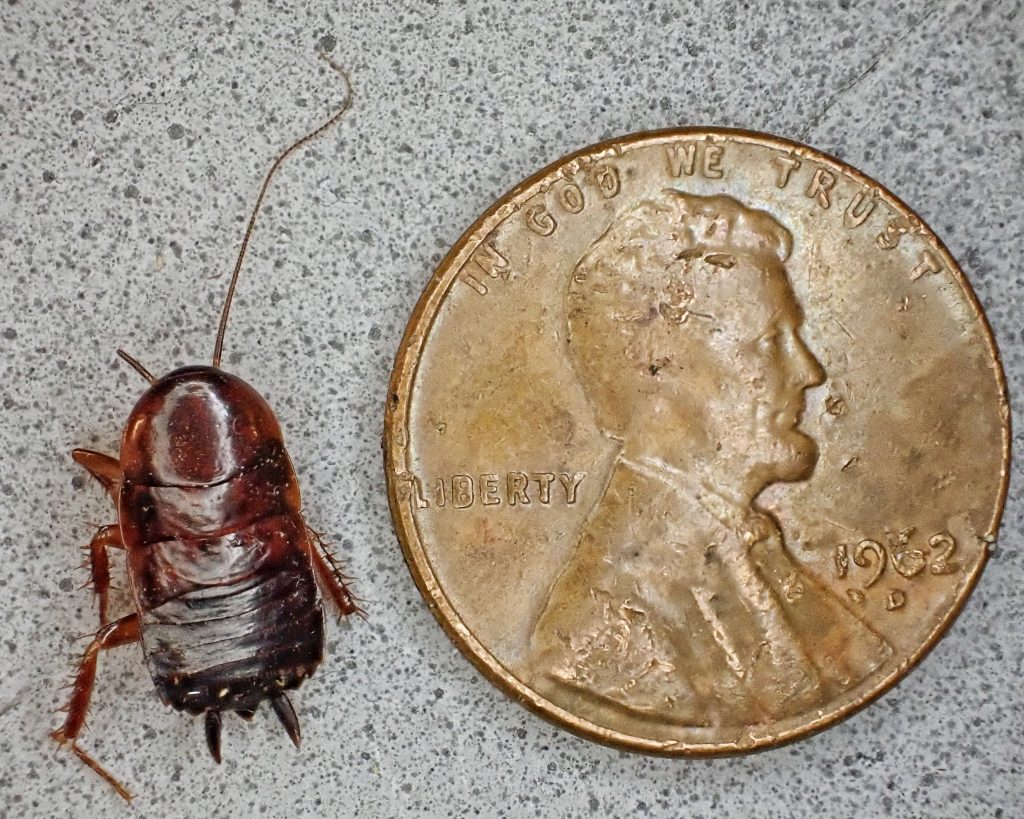
Description-Small (9-15mm) light to dark reddish brown, oval shaped roach with reddish brown legs; males tend to be lighter, and have light brown, unmarked wings, and females are darker and wingless; almost always found outdoors.
Similar species–Cryptocerus clevelandi (they are in a different family, Cryptoceridae, which are, collectively, colloquially, and confusingly, called wood roaches) is 2-3 times larger, with an elongated body and stout, black legs; other roaches in our region are seldom found outdoors; Blatella germanica has a yellowish brown body and legs, parallel dark stripes on the pronotum, and both males and females have wings; Supella longipalpa has large dark blotches at forewing base, and a dark spot on the pronotum, often at the apex of converging lines; Blattid cockroaches are twice as large.
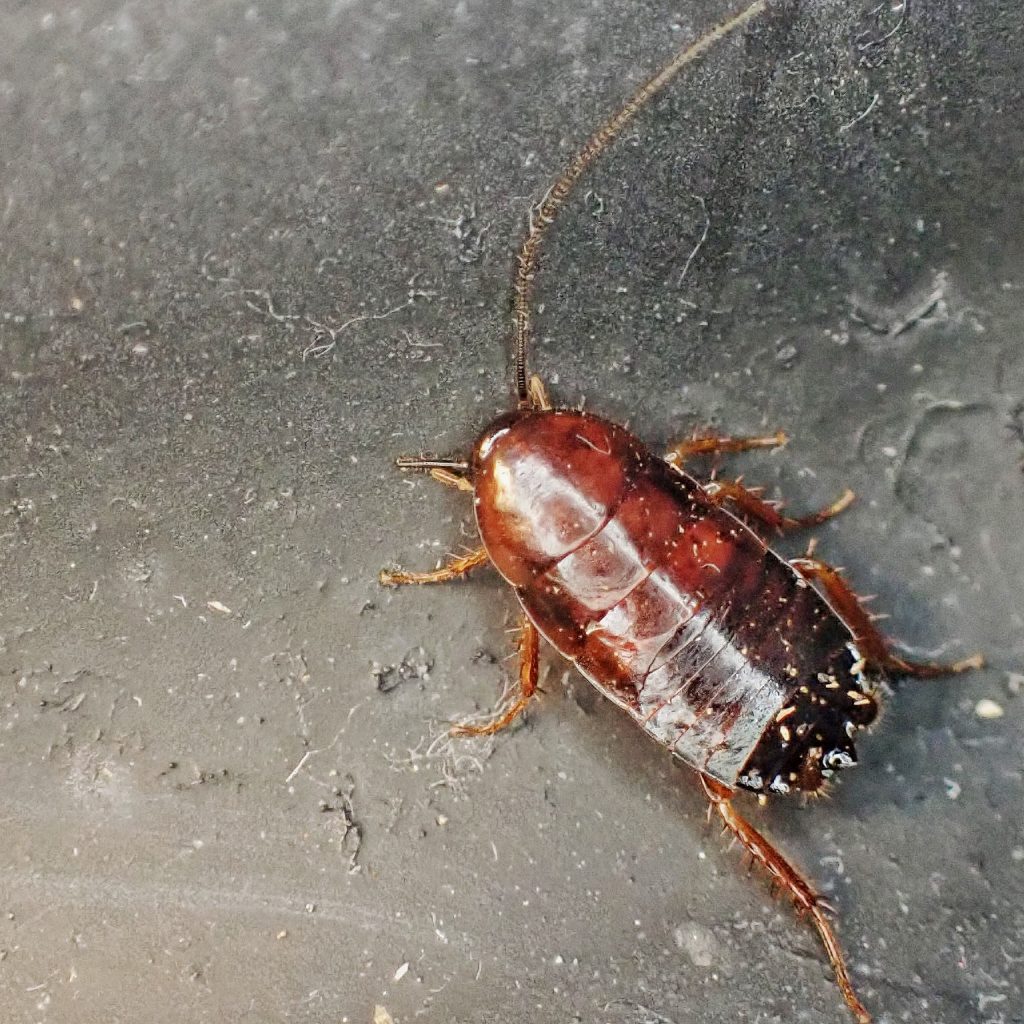
Habitat-Under rocks, wood, and other cover, and sometimes in harvester ant mounds, in forests and woodlands; seem to often be associated with oaks.
Range-Western US, and south into Mexico; in our region they seem to be found from the east slope of the Cascades to the Pacific in Oregon, in northern California, central to sw Idaho, and thus far apparently only recorded from Klickitat County in Washington state.
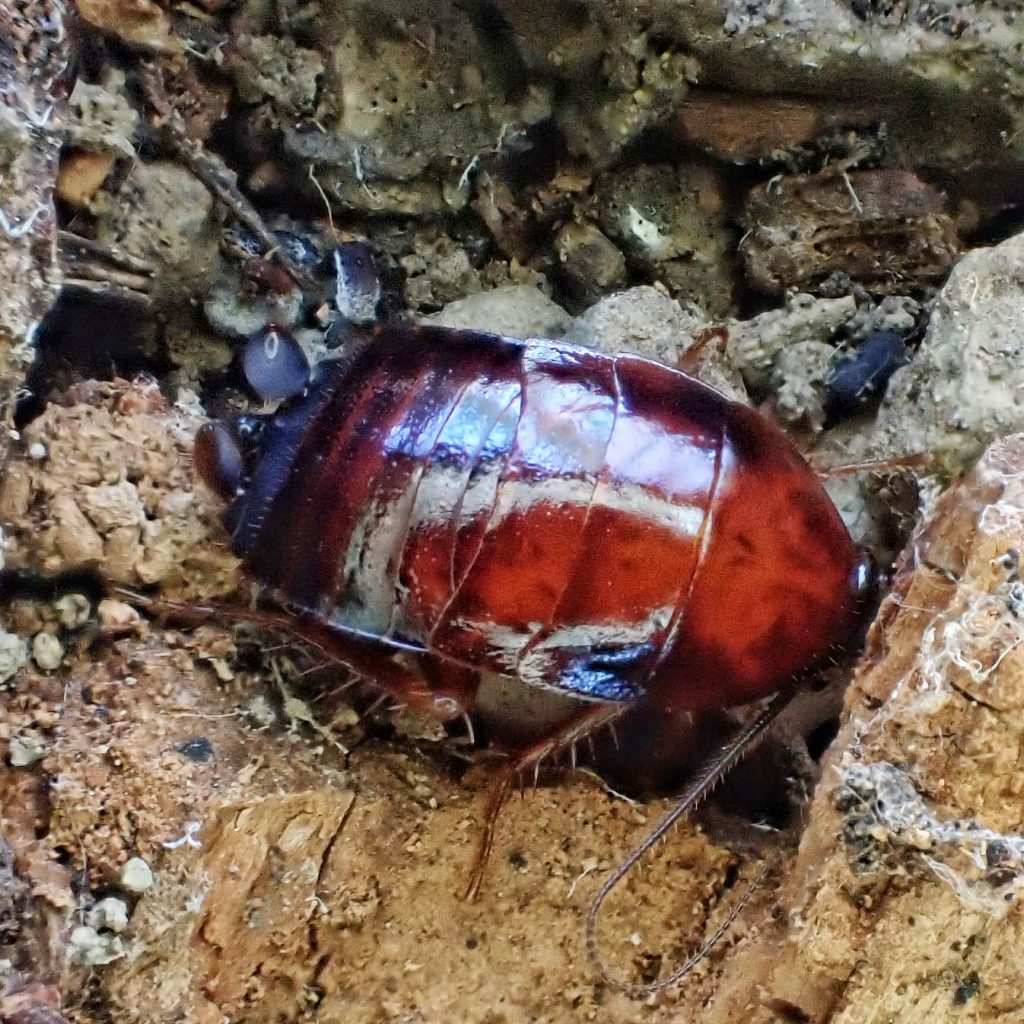
Eats-The diet of this species doesn’t appear to have been studied, but they are thought to be omnivorous, and other Parcoblatta spp. incorporate such things as fungi, flower petals, tree cambium, moss, sap, living and dead arthropods, mammalian cartilage, and bird and mammal feces into their diet.
Eaten by-Evaniid wasps may lay eggs of their parasitic larvae in the oothecae of these cockroaches (Smith/Deans; 2008); parasitic horsehair worms are known to infect nymphs and subadults of this species, if they consume the aquatic snails the worms use as a primary host (Figueira, et al.; 2021); probably preyed upon by insectivores of all classes
Adults active-Year around
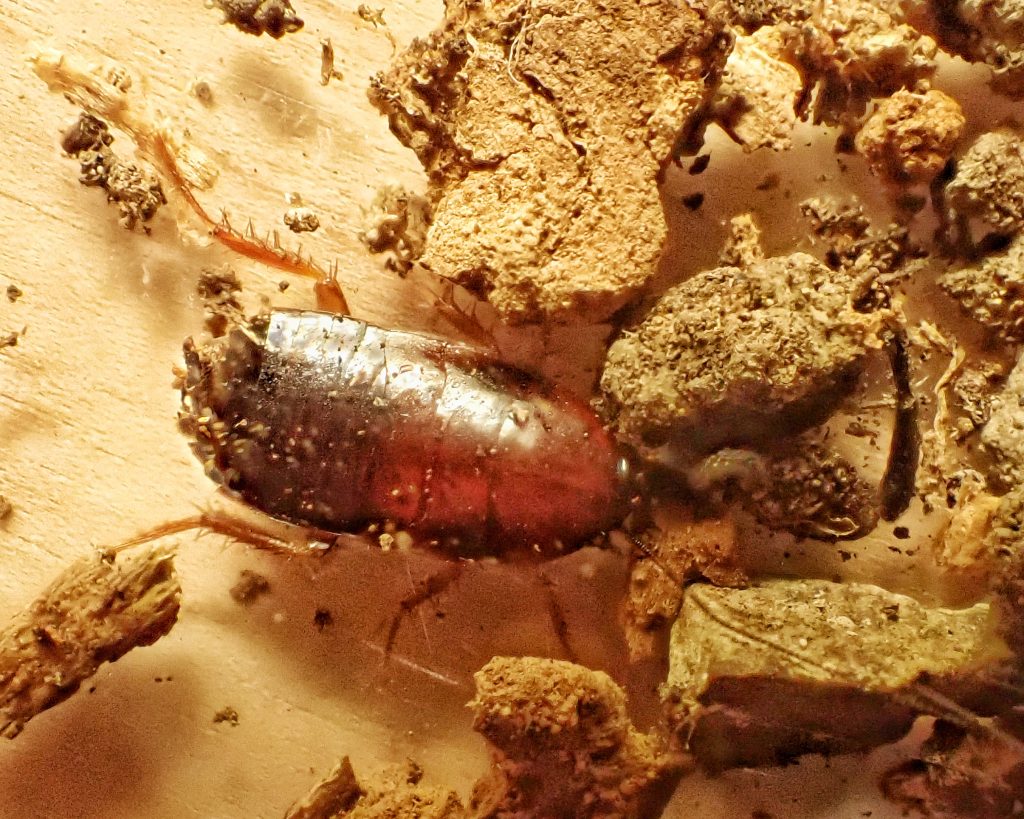
Life cycle– Eggs all hatch at more or less the same time, and hatchlings swell their bodies with air to depart the encasing ootheca, which is a group affair, and death of conspecifics can doom the whole group, because they won’t have the ‘muscle’ to split the keel of the ootheca; I can’t seem to find any species (or even genus) specific information beyond what I mention above, but it is likely that breeding and ootheca production is a springtime affair, to give the nymphs of these outdoor cockroaches a chance to mature before winter.
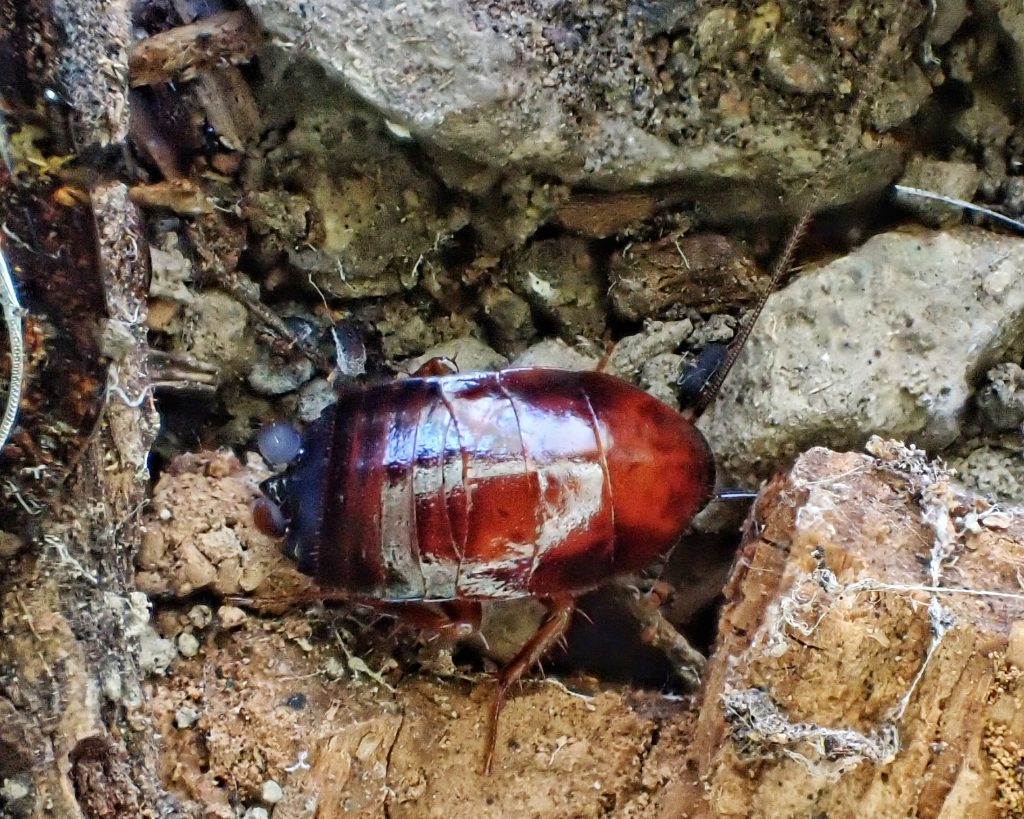
Etymology of names–Parcoblatta is from the Latin word for cockroach, with a prefix that indicates either ‘forest/woodland’, or ‘refrain from/spare’, and while ‘forest/woodland’ seems the obvious choice based on their habitat, Hebard didn’t deign to explain his reasoning in the original description of this genus. The specific epithet americana presumably indicates that they are found in America, but since they were not the first native, ectobiid cockroaches described from this country, and their distribution is limited to the west, it seems an odd choice. Scudder does not explain the reference in his original description.
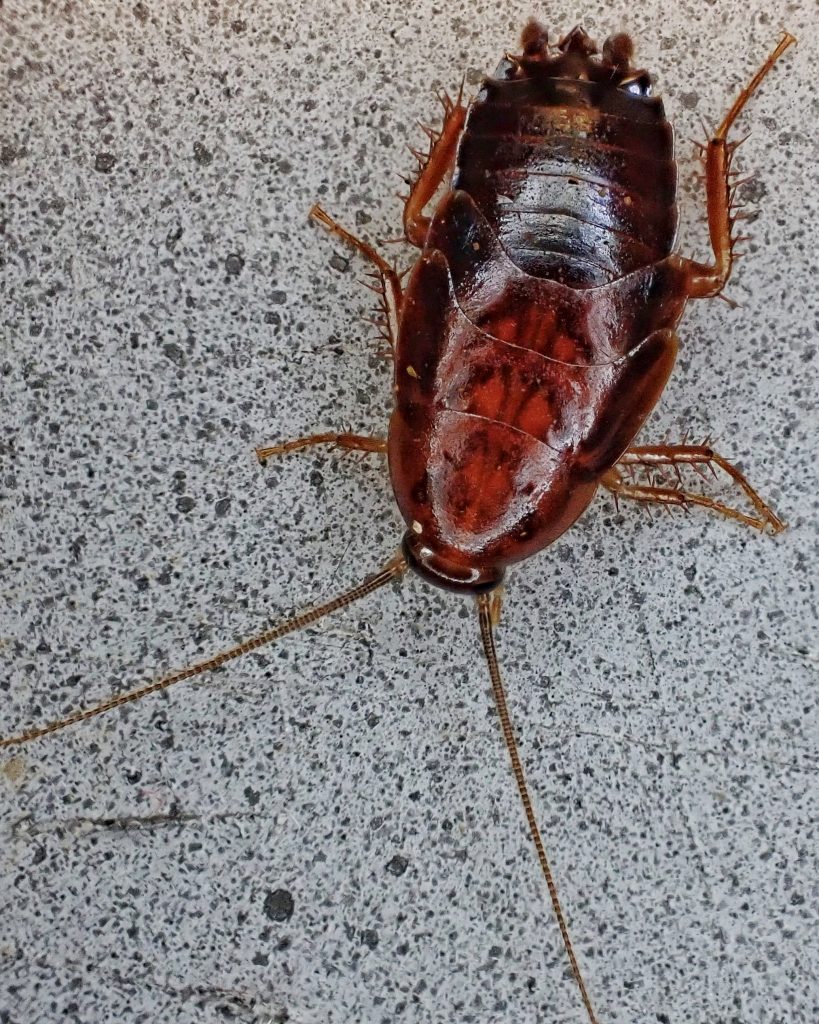
https://www.zin.ru/animalia/coleoptera/addpages/andrey_ukrainsky_library/references_files/bell07.pdf
https://pictureinsect.com/wiki/Parcoblatta_americana.html
https://www.insectidentification.org/insect-description.php?identification=Western-Wood-Cockroach
https://bugguide.net/node/view/228482
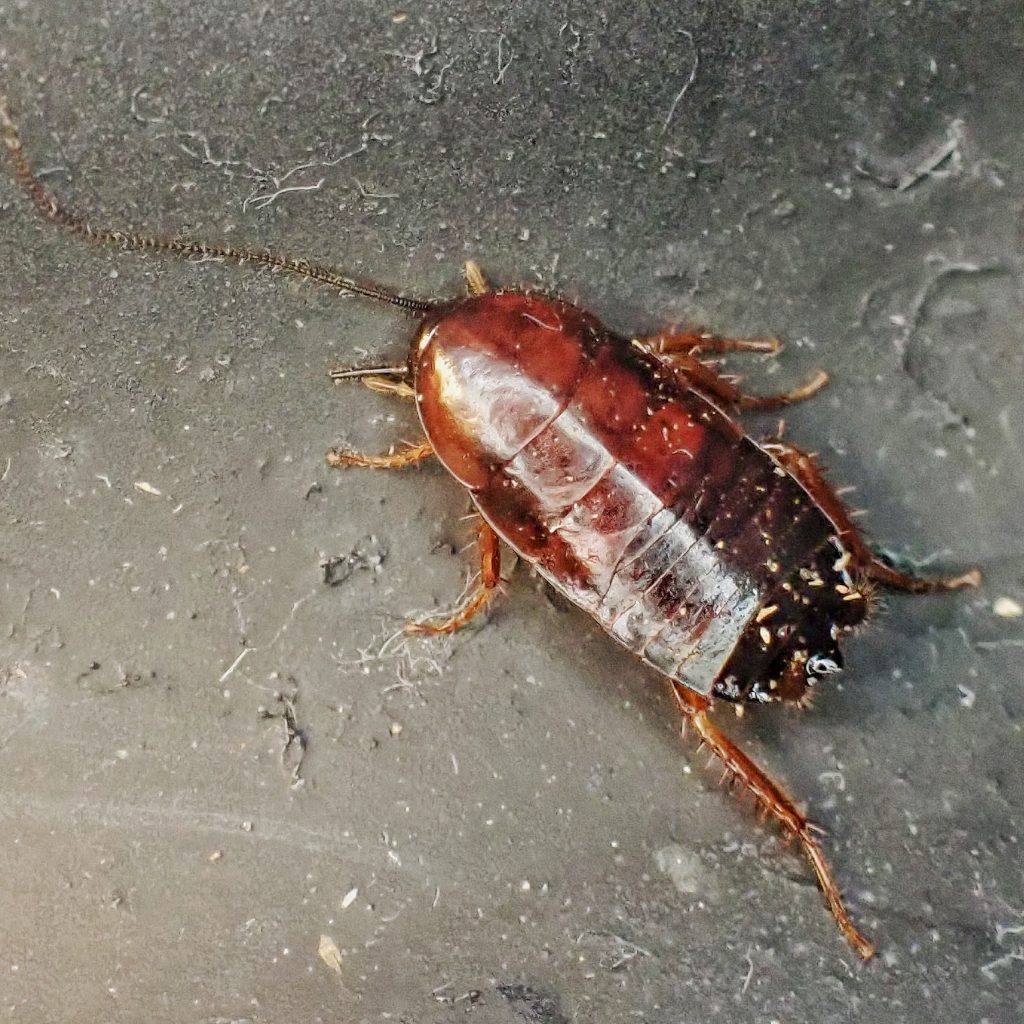
Cool ! Never knew there was an outdoor only cockroach.
Appreciate showing penny for scale.
Glad you enjoyed it! Thanks for your appreciation!
Very cool! Thanks!
Thank you for your appreciation, Melissa!
I was picturing these much larger in my mind until I saw the penny. These are so cute!
I agree, Kat!